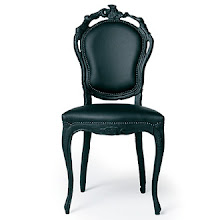Citation: Mazé, R., & Redström, J. (2008). Switch! Energy ecologies in everyday life. International Journal of Design, 2(3), 55-70.
55. There is no single answer to the question of how people should live, nor any silver bullet for solving current ecological problems—and yet, contemporary design must seek ways to think and act in light of emerging environmental challenges. We present here an overview of the Switch! design research program, a continuation of our previous work on how interaction and product design can promote awareness of energy use in everyday life. Extending this approach to a larger architectural and urban scale, Switch! was set up to explore the possibilities of design as an intervention into multiple and interpenetrating technical, material and social systems—or ecologies. In addition to designing materials, objects, and interfaces, Switch! also examines how design can be engaged in staging potential scenarios, narratives and debates.
The design of interventions into energy ecologies and the use of design methods become a platform for exposing existing habits and hidden norms as well as for proposing alternative actions and views. These propositions have been developed through practical experimentation and the materialization of design examples. Central to our investigation is how critical practice enables us to examine and discuss the concepts, strategies and ideologies underlying sustainable design.
With the new challenges presented by climate and energy issues, design must reexamine its role in shaping and changing values— both within the sustainability discourse and within the design practices that impact production and the products that shape
practices of consumption. If we consider that design has had, and continues to have, a profound power to influence consumer and societal values, then we might renew its role in light of current problematics of mass-production and (over)consumption. We
might rethink how the values embodied in products influence beliefs and behaviors, and how systems of objects, service ecologies and social ecologies influence user relationships with design products throughout their lifespans and lifecycles.
design can influence multiple actions and interactions that accumulate over time
56. Inspired by contemporary thinking in material culture and the sociology of technology, Switch! considers design as an intervention into multiple and interpenetrating technical, material, and social systems—or ecologies. Although the power to control or to design and implement new systems and structures at such
a scale may not fall to design research, we can use design as a vehicle for exposing, debating and intervening in values within these complex ecologies, thereby introducing new openings for awareness and change.
Design is often said to be about “value creation,” referring to the power of design to effect meaningful and valuable experiences for consumers as well as material and brand value for clients and stakeholders. Operating on behalf of producers, design is bound
up with larger projects of increasing economic and symbolic capital. With respect to consumption, design is no longer, if it has ever been, solely about satisfying the basic human needs of an individual or a society, but also about creating needs and even
manufacturing desire (Forty, 1986). Historically, this persuasive power of design has been employed in service to expanding consumption—indeed, design came into being at a particular stage in the history of capitalism, bound up with economies of industrial production and mass-consumption.
Given this history, as well as contemporary awareness of some of the undesirable ecological side-effects of previous modes of production and consumption, perhaps it is no wonder that design has often been seen as part of the problem within the discourse on environmentalism. In response, diverse strategies are collecting under the umbrella of sustainable design, ranging from those trying to minimize negative environmental costs to those trying to solve environmental problems. Much effort has been directed
towards improving existing manufacturing systems, increasing the energy efficiency of processes and products, and promoting green consumption. Others move away from the production of and desire for the “new,” towards the endurance, reuse and sustainment
of existing things, or towards continuing and closed systems of production.
Given the difficulty of foreseeing the future consequences of design decisions, it is possible that things we regard as solutions may produce further problems elsewhere
in the world or later on in time. Humanitarian and environmental interests intersect and even compete within sustainable design, pointing to larger historical and philosophical tensions between ideas of nature and culture, progress and change, individualism and collectivism.
57. Engaging with the issues bound up in environmental discourse and sustainable design means, to some extent, engaging with the complexity of causes and effects, problems and solutions. Designers must consider the potential consequences and impact
of their proposals in order to, at least to some extent, anticipate potential problematics and emerging issues. Propositions must also be located in a world already densely-populated with previous design “solutions” to human needs and desires.
66. We believe that design research offers the possibility to act as a sort of curation in the development of a mature debate about environmental issues by materializing diverse—and perhaps even conflicting—values in forms and formats that people can relate to and participate in.
68. Sustainable design must incorporate and encourage mechanisms for critically reflecting on the role and responsibility of design in shaping human experience and changing social conditions. Rather than attempting to preserve the status quo or
return to a previous state of affairs, this requires us to acknowledge the inevitably productive and persuasive power of design in creating the “new.” Besides new solutions—or problems—this might also include the formation of reflective practitioners and alternative products. As an “art of staging,” design might meet
sustainability in “problem-finding” within existing and emerging paradigms, opening up questions to an expanded range of interests and stakeholders. Critical practice might be brought to bear on sustainable design not as simplification but diversification of the ways in which we might understand the challenges at hand. In such terms, design practice might employ research and theory in order to open up the way for constructive engagement in complexity.
Subscribe to:
Post Comments (Atom)

No comments:
Post a Comment